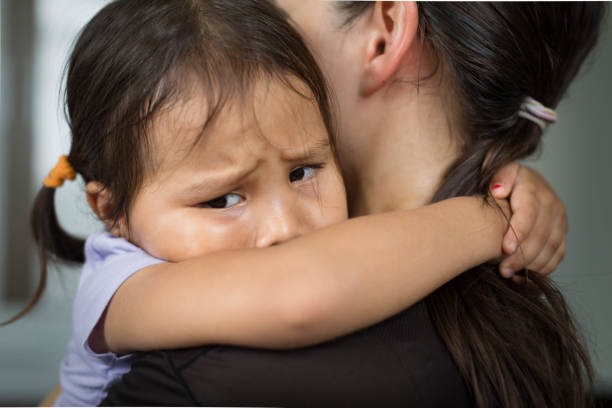- For some families, school itself can be a trigger. If a parent had an unfavorable experience with school as a young child or adolescent, entering a school building may trigger a fight or flight response. Feelings of shame or embarrassment over a struggling child and lack of understanding in school meetings can be triggers for families. Any situation that causes an adult to feel ashamed, helpless, frightened or out of control may remind them of past trauma and may trigger intense reactions.
- Some responses you may see when working with parents can include anger, defensiveness, avoidance or shutting down. Negative interactions about these often-misunderstood responses can interfere with a teacher’s ability to form positive relationships with families and develop a healthy relationship. It is important to remember not every parent has experienced trauma and not all intense responses are related to trauma. The more schools become aware of trauma and potential impacts, the more they can address those needs.

- Think about it:
- How can you tell when a parent’s stress response system has been activated? How do they look, sound, behave, respond?
- Do you have an example of a time you engaged with a parent in a context that might have been triggering to someone with a trauma history? What could you do differently based on your knowledge of trauma and its effects?
- What are other strategies to consider in working with families?
(Adapted from NCTSN’s Child Trauma Toolkit for Educators: https://www.nctsn.org/resources/child-trauma-toolkit-educators)
- Encouraging families to maintain usual routines and think about ways to promote consistency with children at home and the classroom. A return to “normalcy” will communicate the message that the child is safe and life will go on.
- Work to provide children choices in the classroom whenever possible and share with caregivers the strategies that tend to work for a particular child. Often traumatic events involve loss of control and/or chaos, so you can help children feel safe by providing them with some choices or control when appropriate.
- Provide praise to the child for positive behaviors (even when adults believe that a child “should know how to” do something)
- Set clear, firm limits for inappropriate behavior and develop logical—rather than punitive— consequences.
- Recognize that behavioral problems may be transient and related to trauma. Remember that even the most disruptive behaviors can be driven by trauma-related anxiety.
- Provide a safe place for the child to talk about what happened. Set aside a designated time and place for sharing to help the child know it is okay to talk about what happened.
- Give simple and realistic answers to the child’s questions about traumatic events. Clarify distortions and misconceptions. If it isn’t an appropriate time, be sure to give the child a time and place to talk and ask questions. Make sure to do this work with the support of supervisors or peers and know your limits of when a child or family should be referred to treatment.
- Be sensitive to the cues in the environment that may cause a reaction in the traumatized child. For example, victims of natural storm-related disasters might react very badly to threatening weather or storm warnings. Children may increase problem behaviors near an anniversary of a traumatic event.
- Anticipate difficult times and provide additional support. Many kinds of situations may be reminders. If you are able to identify reminders, you can help by preparing the child for the situation. For instance, for the child who doesn’t like being alone, provide a partner to accompany him or her to the restroom.
- Warn children if you will be doing something out of the ordinary, such as turning off the lights or making a sudden loud noise.
- Be aware of other children’s reactions to the traumatized child and to the information they share. Protect the traumatized child from peers’ curiosity and protect classmates from the details of a child’s trauma.
- Understand that children cope by re-enacting trauma through play or through their interactions with others. Resist their efforts to draw you into a negative repetition of the trauma. For instance, some children will provoke teachers in order to replay abusive situations at home.
- Although not all children have religious beliefs, be attentive if the child experiences severe feelings of anger, guilt, shame, or punishment attributed to a higher power. Do not engage in theological discussion. Rather, refer the child to appropriate support.
- While a traumatized child might not meet eligibility criteria for special education, consider making accommodations and modifications to academic work for a short time, even including these in a 504 plan.
- In order to provide some accommodations, teachers might:
- Shorten assignments
- Allow additional time to complete assignments
- Give permission to leave class to go to a designated adult (such as a counselor or school nurse) if feelings become overwhelming
- Provide additional support for organizing and remembering assignments When reactions are severe (such as intense hopelessness or fear) or go on for a long time (more than one month) and interfere with a child’s functioning, give referrals for additional help. As severity can be difficult to determine—with some children becoming avoidant or appearing to be fine (e.g., a child who performs well academically no matter what)—don’t feel you have to be certain before making a referral. Let a mental health professional evaluate the likelihood that the child could benefit from some type of intervention.
Background Colour
Font Face
Font Kerning
Font Size
Image Visibility
Letter Spacing
Line Height
Link Highlight
Text Colour